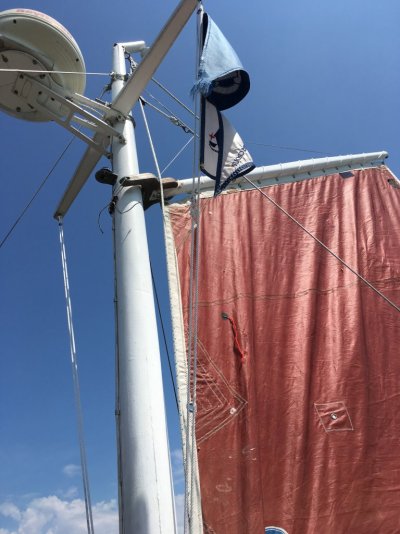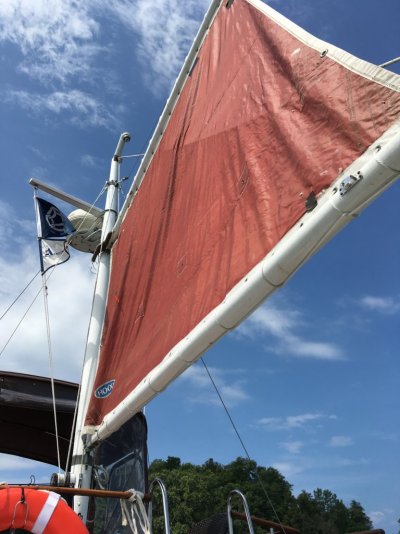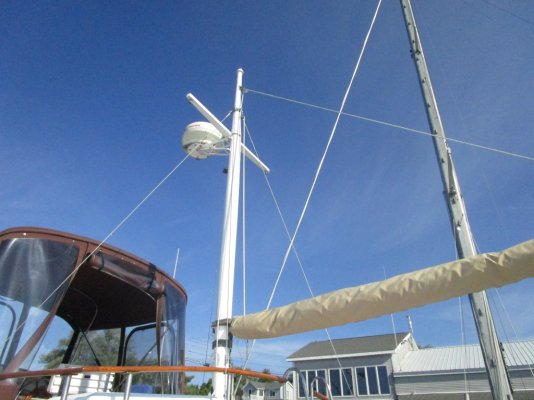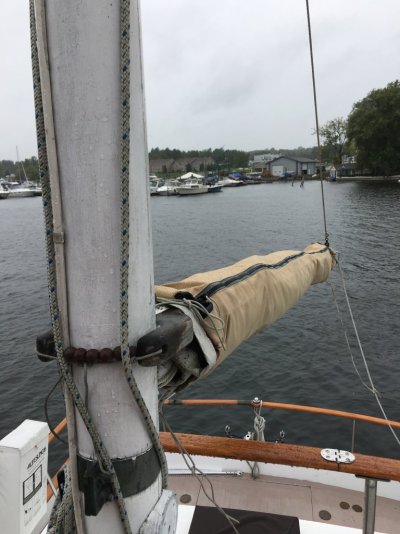I have a mast and a boom on top. I use it to haul things up and down, when needed. It looks very strong and long enough to put up a steadying sail somehow.
My boat is very tender and rolls quite a bit. I am thinking to setup a steadying sail to reduce the roll. This is not for anchorage roll, but rather cruising roll while underway.
I know there is no perfect solution, but it does not hurt to try, since it is not very expensive. I do not know anything about sails, or how to setup and handle sails. I am not looking for anything special (riding sail would be nice for emergency get home solution, but I think that should be a separate sail). The boom and mast has already plates welded on, where I could drill some holes for the rigging. It is aluminum and looks strong. I can swing the boom out for about 50-60 degrees in either direction, if that is useful for this purpose.
View attachment 154281View attachment 154282View attachment 154283View attachment 154284View attachment 154285View attachment 154286View attachment 154287
Anyone has done it alone, or it has to be ordered and manufactured? I took few photos of the mast/boom, so you can advice me what fits, or not?
Thanks.







